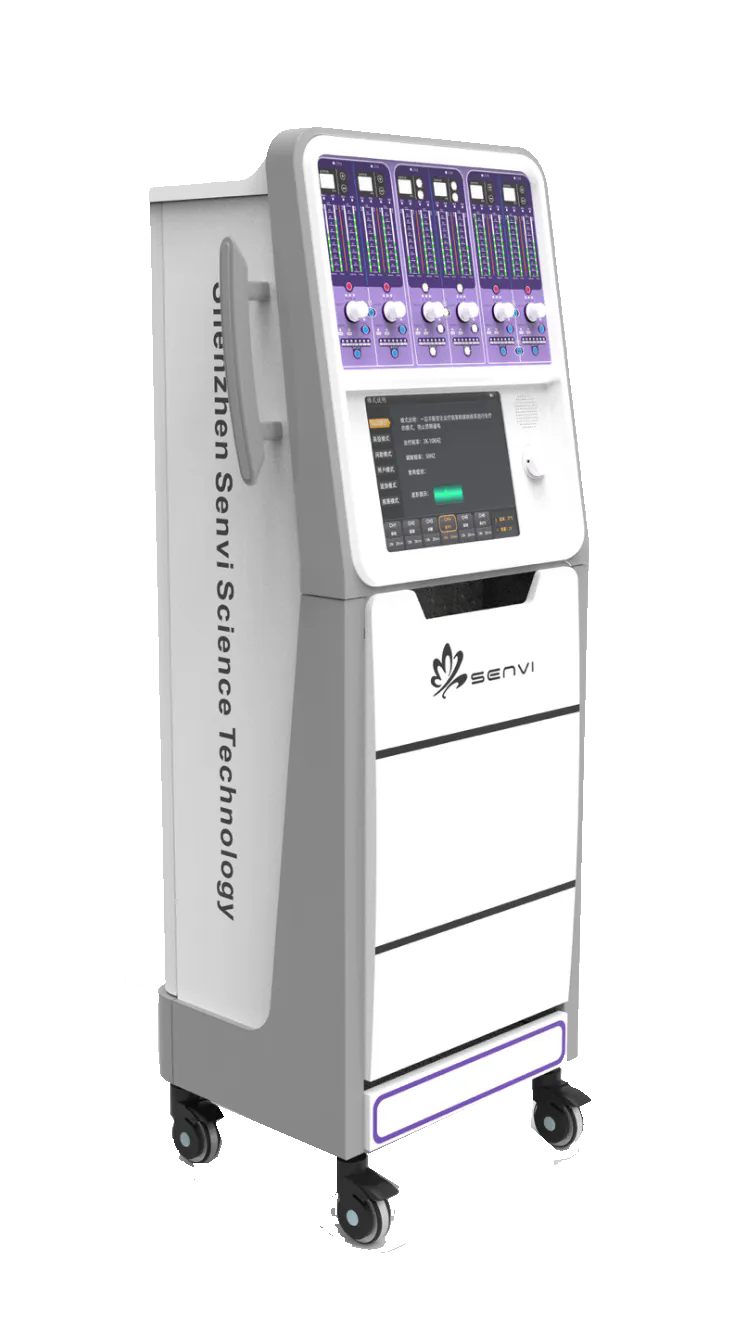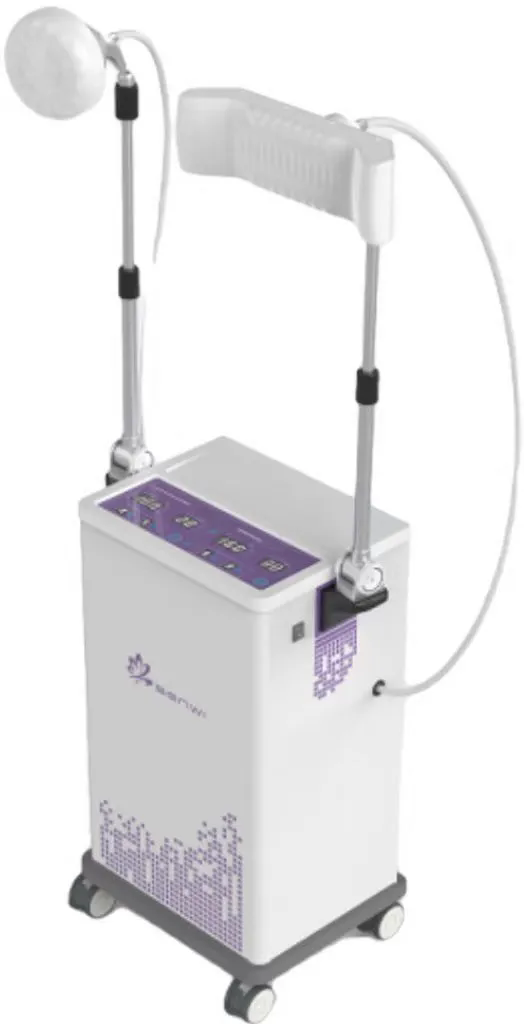Electrical Stimulation Therapy
Electrical stimulation therapy is a physical therapy method that uses electrical current to stimulate muscles or nerves, thereby inducing muscle contraction or nerve excitation. It is divided into low-frequency electrical stimulation therapy, medium-frequency electrical stimulation therapy, and high-frequency electrical stimulation therapy.
Low-Frequency Electrical Stimulation Therapy
Low-frequency electrical therapy refers to a method that uses low-frequency electrical current with a frequency ranging from 0 to 1000Hz to treat diseases.
Functions ✦
Anti-inflammatory and analgesic: Alleviate pain and inflammation through the action of electrical current.
Improve local blood circulation: Promote blood flow, which helps in wound healing and relieving local pain.
Excite neuromuscular tissues: Stimulate nerves and muscles to improve their functions.
Promote tissue healing: Accelerate the recovery process of damaged tissues.
Classification ✦
Functional Electrical Stimulation (FES)
It uses low-level electrical pulses to activate nerves and muscles, helping to perform specific functional tasks. It is used to stimulate organs or limbs with lost or abnormal functions, and replace or correct the lost functions through the immediate effects produced, such as grasping or walking. It is mainly used for patients with paralysis caused by brain or spinal cord injuries.
Neuromuscular Electrical Stimulation (NMES)
This therapy uses low-level electrical pulses to activate muscles supplied by motor nerves. Unlike functional electrical stimulation, NMES is mainly used to increase the strength of weak or paralyzed muscles.
Transcutaneous Electrical Nerve Stimulation (TENS)
It is the first choice for analgesia. It stimulates sensory nerves through low-frequency pulsed current applied through the skin to achieve an analgesic effect. A characteristic of this therapy is that there is no muscle contraction; instead, parameters are set to provide a sensory experience to the skin.
Low-Frequency High-Voltage Pulsed Current Therapy (HVPC)
It stimulates the patient’s nerves and muscles by applying high-voltage low-frequency pulsed current, so as to achieve effects such as relieving pain, promoting blood circulation, and improving muscle function. It is often used to treat diseases such as chronic pain, neuralgia, and muscle atrophy.
Transcutaneous Electrical Acupoint Stimulation (TEAS)
Based on the theory of traditional Chinese medicine acupuncture and combined with modern biomedical technology, it uses low-frequency pulsed current to stimulate motor nerves or muscles to cause muscle contraction, stimulate acupoints, and activate the operation of meridians, qi, and blood in the human body.
Medium-Frequency Electrical Stimulation Therapy
The method of treating diseases using pulsed current with a frequency of 1000–100,000Hz is called medium-frequency electrical therapy.
Functions ✦
Promote local blood circulation, relieve pain, reduce inflammation, soften scars, exercise skeletal muscles, prevent muscle atrophy, increase smooth muscle tension, and regulate autonomic nerve function.
Classification ✦
Interferential Current Therapy
It includes traditional interferential current therapy, dynamic interferential current therapy, and stereodynamic interferential current therapy. It is a treatment method that uses alternating current signals of different frequencies and amplitudes to produce interference effects. By generating low-frequency modulated pulsed current in deep tissues, it has effects such as relieving pain, reducing inflammation, accelerating wound healing, and treating and preventing muscle atrophy.
Constant-Amplitude Medium-Frequency Electrical Therapy
It includes audio frequency electrical therapy, audio frequency electromagnetic field therapy, and super audio frequency electrical therapy.
Modulated Medium-Frequency Electrical Therapy
It includes sinusoidally modulated medium-frequency electrical therapy and pulsed modulated medium-frequency electrical therapy.
Low-Medium Frequency Mixed Electrical Therapy
It includes music electrical therapy and fluctuating electrical therapy.
High-Frequency Electrical Stimulation Therapy
Functions ✦
Reduce inflammation and swelling, relieve spasm, alleviate pain, enhance immunity, improve visceral function, and promote tissue repair.
Classification ✦
Classification by Wavelength
Long-wave therapy (resonant spark therapy), medium-wave therapy, short-wave therapy, ultra-short wave therapy, and microwave therapy.
Classification by the Way Current Acts on the Human Body
Spark discharge method, direct contact method, capacitor field method, inductor method, and electromagnetic wave radiation method.

Xinghui Technology Super Neuromuscular Meridian Stimulator Model SV-NSLF
It uses multiple sets of negative-pressure adsorption point electrodes to attach to the human body’s pain points, acupoints, and muscles. With multiple functional outputs of low-frequency current—including High-Voltage Pulsed Current Therapy (HVPC), Transcutaneous Electrical Nerve Stimulation (TENS), Neuromuscular Electrical Stimulation (NMES), Functional Electrical Stimulation (FES), Stimulus-Triggered Analgesia (SSP), and Cranial Electrotherapy Stimulation (CES)—it achieves effects such as pain relief, neuromuscular stimulation, meridian-acupoint stimulation, meridian dredging, and regulation of qi-blood balance. Compared with adhesive electrodes, it can achieve precise point-stimulation therapy.

Xinghui Technology Interferential Wave Variable-Frequency Therapeutic Apparatus Model SV-IT
It delivers two sets of electrical currents (via 4 electrodes) into the human body in a crossed manner. With its unique ocean wave therapy and variable-frequency technology, it provides a more comfortable treatment experience for patients. Clinically, it is widely used for pain relief, anti-inflammation and detumescence, skeletal muscle exercise, muscle relaxation, spasm relief, and other applications.

Xinghui Technology 3D Microwave Therapeutic Apparatus Model SV-MWT
It adopts the unique three-dimensional (3D) spatial irradiation mode. Through anti-phase irradiation, it can avoid the formation of hot spot superposition. With non-contact irradiation, it can perform treatment through clothing, which better protects the patient's privacy. It has obvious effects in anti-inflammation, detumescence and pain relief.



 简体中文
简体中文
